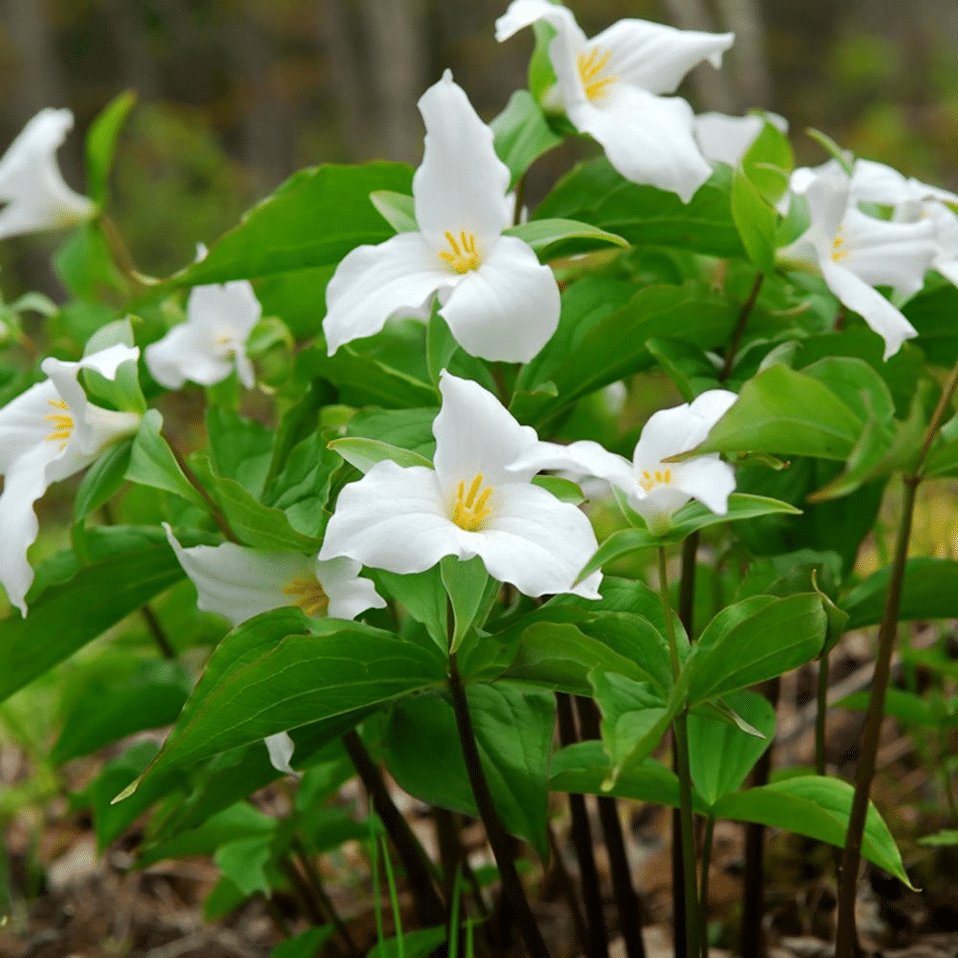Perennials are shade-loving plants. Shade perennials are perfect for those areas that are sunlight depleted. Below are some very well-adapted shade perennials for excellent choices in sunlight-lacking garden areas:
Trilliums
The trillium plant, also called the wood lily, is native to the eastern part of North America. It grows best in hardiness zones 4 to 8. As its common name suggests, its natural habitat is moist woods.

Trilliums are easy to grow in rich, fertile soil that’s full of organic matter but well-drained. It needs regular but medium watering and should be mulched in the fall. It grows from 1 to 1.5 feet tall with a .75-foot to 1-foot spread. Trillium plants grow relatively quickly from rhizomes but are challenging to grow from seed. Over time, it will spread and form a beautiful ground cover plant.
The plant gets its formal name because the leaves, sepals, and petals come in threes. In the spring, three elliptic, oval or diamond-shaped green leaves that are usually from 3 to 4 inches long appear on a stem that grows up from the ground. In turn, a single flower appears from April to June on top of the leaves. The flowers have three oval white petals with wavy edges and three narrow sepals below. As the flower ages, it grows from white to pink. The herb has six stamens with yellow anthers. In the fall, they’re replaced by capsules that resemble berries.
Virginia bluebells — Mertensia virginica
The beautiful Virginia bluebell grows best in hardiness zones 3 to 8. A reasonably fast grower, it obtains a mature height of 1.5 o 2 feet with a spread of 1 to 1.5 feet. It produces its trademark bell-shaped, purplish-blue flowers from March to April. It needs medium watering and can tolerate rabbits and being planted near black walnut. Black walnut often kills off the plants that are placed beneath it.

Virginia bluebells prefer soil that’s rich and moist but well-drained since its natural habitat is wet woods and floodplains. It forms erect clumps filled with groups of drooping, 1-inch-long flowers that arrive from March to April. Even the flower buds are attractive, for they are a tender pink, and the flower retains the colour for a while after it opens. The oval leaves of the plant are smooth and bluish-green, and they die back in the middle of summer, especially if the plant isn’t watered.
Virginia bluebells are excellent in rock gardens and woodland or wildflower gardens. It’s also suitable for herbaceous borders but needs to be planted with other plants since it goes dormant at the height of summer. That it has no dangerous pests or disease problems makes this flower even more attractive.
Columbine plants – Aquilegia canadensis
The columbine perennial plant is just right for that place that is so shady that very few other plants will grow. On the other hand, it does well in full sun. This plant thrives in hardiness zones 3 to 8. It has a mature height of 2 to 3 feet and a spread of 1 to 1.5 feet. The nodding spurred flowers, whose colours range from light pink and yellow to scarlet and yellow, arrive in April to May. Their spurs hold nectar and attract hummingbirds.

Columbine plants need medium watering and are useful plants to allow them to naturalize in the garden. The plant self-seeds readily, especially if it’s deadheaded after the blooms fade. Even the foliage, which is made of 4 to 6-inch long compound leaves divided into pale green; three-lobed leaflets are attractive. The fruit is a beaked, dry pod that splits open. Columbine tolerates deer, rabbit, and drought, and though it prefers average, well-drained soil, it can tolerate dry land.
